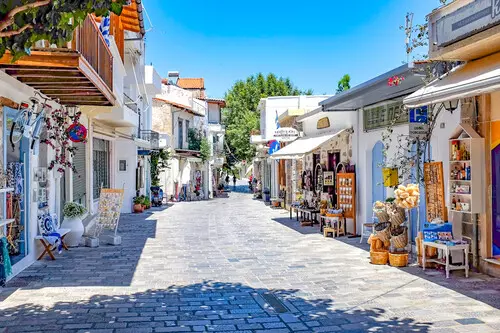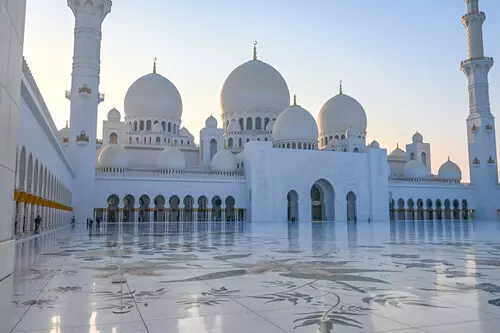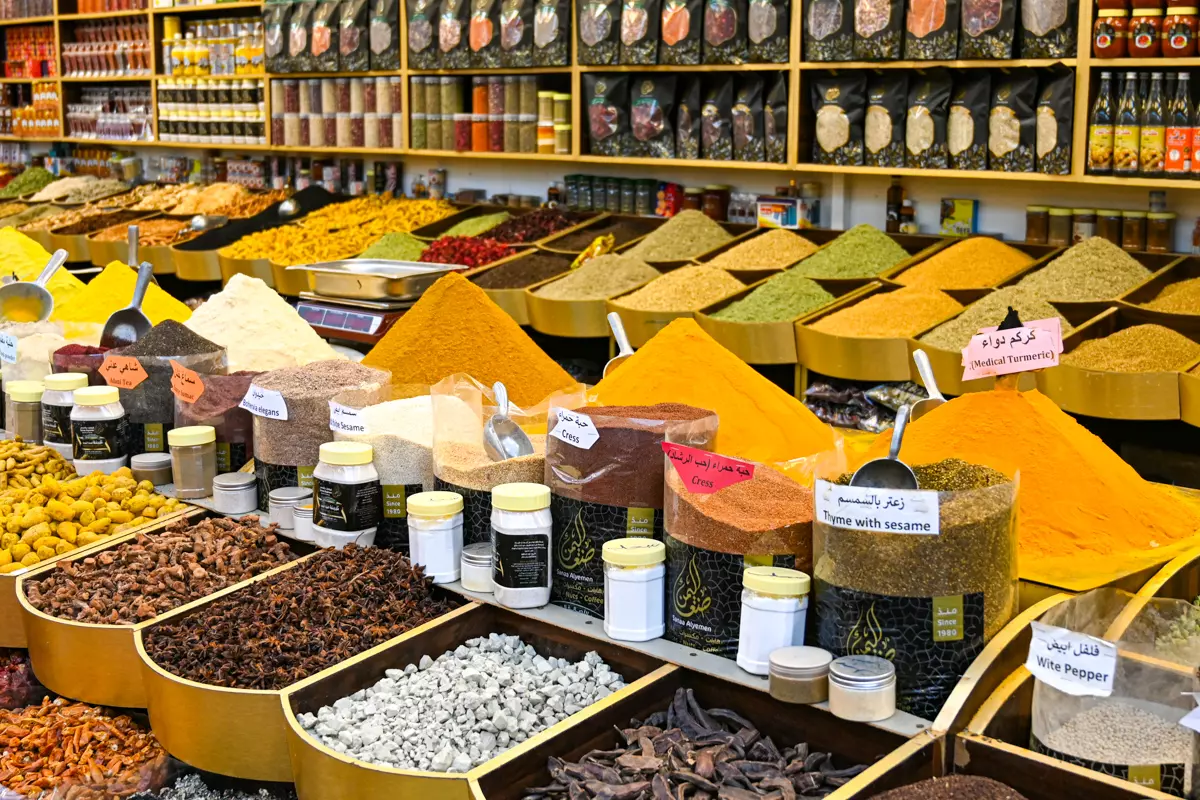Al Fahidi Historical Neighbourhood: A Journey Through Time
For anyone interested in history, architecture, and cultural heritage, Dubai’s Al Fahidi Historical Neighbourhood is a place not to miss. It tells the story of the city’s past and is filled with art galleries, museums, and beautiful old architecture.
It’s one of my favorite neighbourhoods in Dubai, and I always make time to come back here, even if just for a short visit. The best way to explore is on foot, taking your time to enjoy every street and hidden corner.
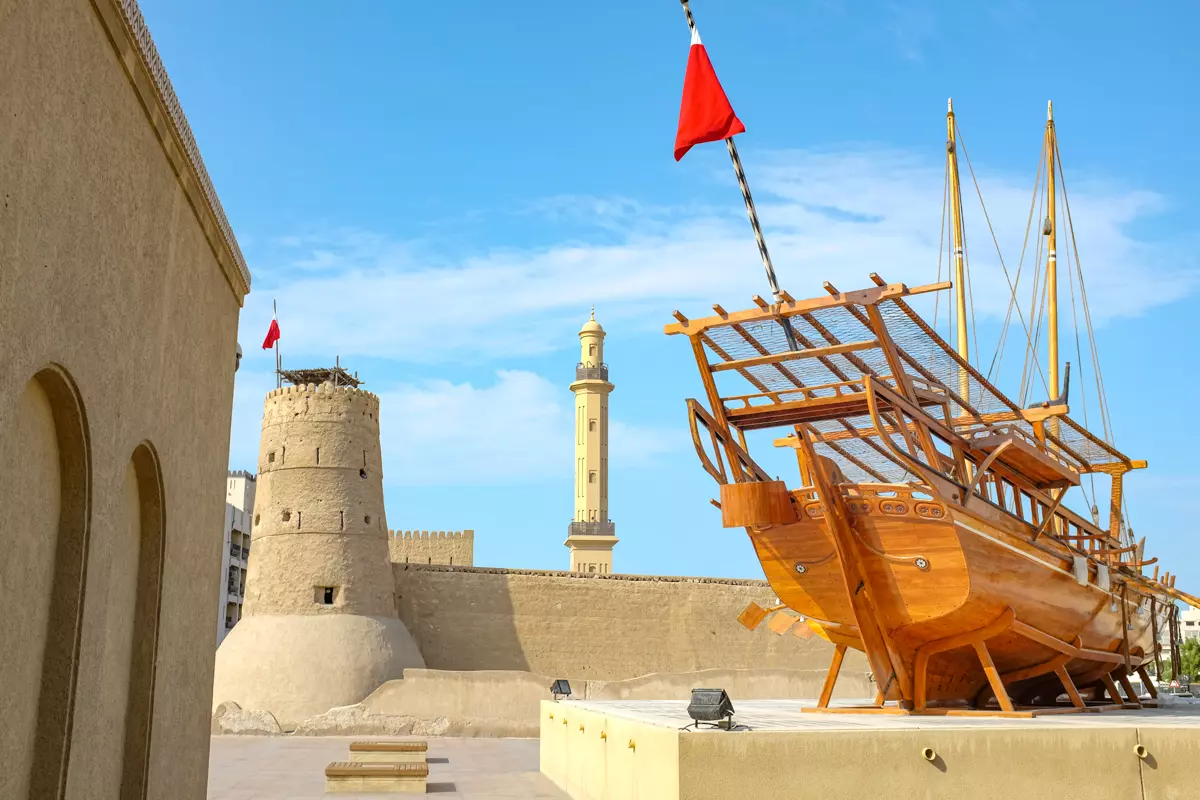
The Al Fahidi Historical Neighbourhood feels as if it’s frozen in time, with every corner revealing a glimpse into its rich, long-standing history. It’s a journey back to the pre-oil discovery era, offering a rare chance to see what life in Dubai was like in the past. The lively atmosphere here is nothing like the noise of the modern city. Wandering through the labyrinth of narrow alleyways, surrounded by houses crowned with wind towers rising toward the sky, offers a striking contrast to Dubai’s wide, contemporary streets and its towering skyscrapers.
What To See In Al Fahidi Historical Neighbourhood
Dubai Fort & Museum
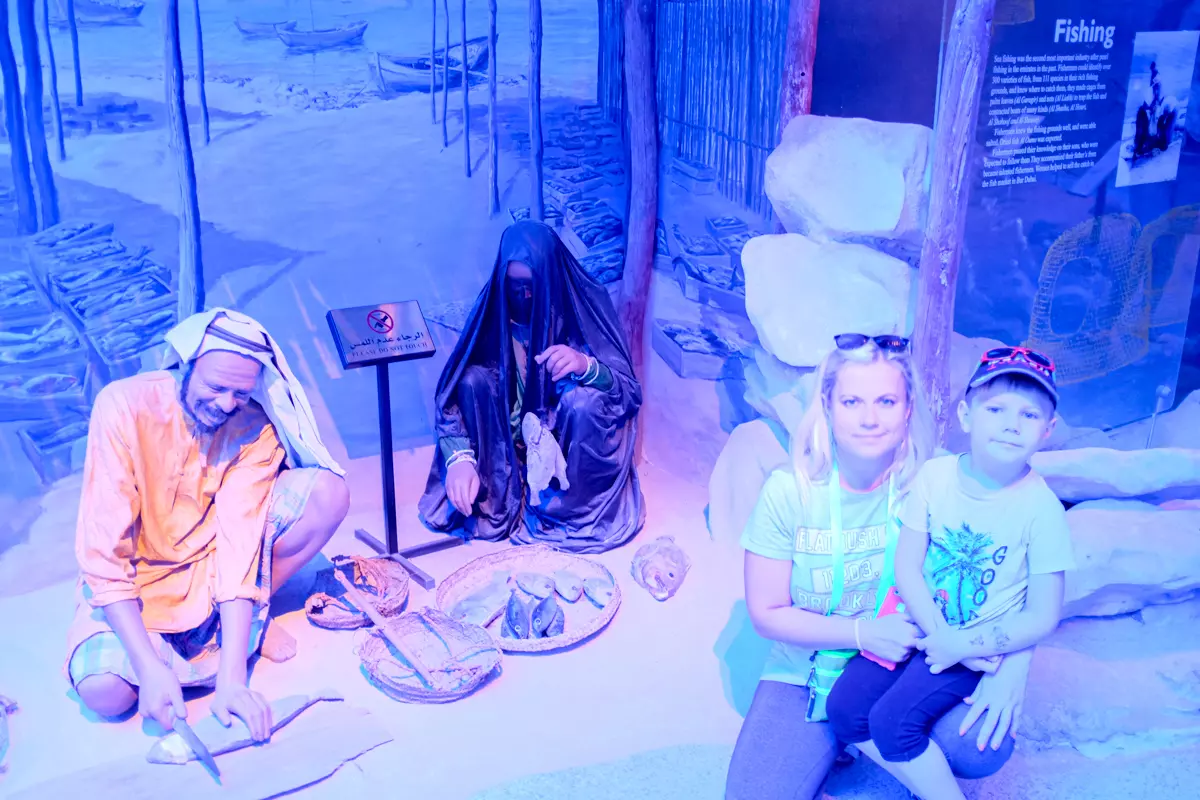
One of the most prominent attractions in the Al Fahidi neighbourhood is the Dubai Fort, which houses the Dubai Museum. Built in 1787, the fort is the oldest building in the city. It was constructed using clay, rocks, and lime. Given these materials, it remains remarkably well-preserved to this day. Originally built for defense, the fort protected the city’s inhabitants for nearly two centuries.
In the early 20th century, three massive towers were added to the structure, and the fort began serving various other purposes. Over the years, it has been a palace, a prison, a barracks, and, finally, since 1971, a museum. This museum showcases Dubai’s journey from a fishing village to the vibrant metropolis we know today.
I really enjoyed wandering through the different exhibits – especially the section showing what Dubai looked like before the discovery of oil, when pearl diving was the main livelihood. It feels almost surreal to see how quickly the city has transformed. The recreated Bedouin settlements, traditional souks, and palm-leaf houses also bring the past to life in a way that kids and adults alike will find engaging.
Working Hours: The museum is open to visitors from Saturday to Thursday, 8:30 a.m. to 8:30 p.m., and on Fridays from 2:30 p.m. to 8:30 p.m.
Coffee Museum
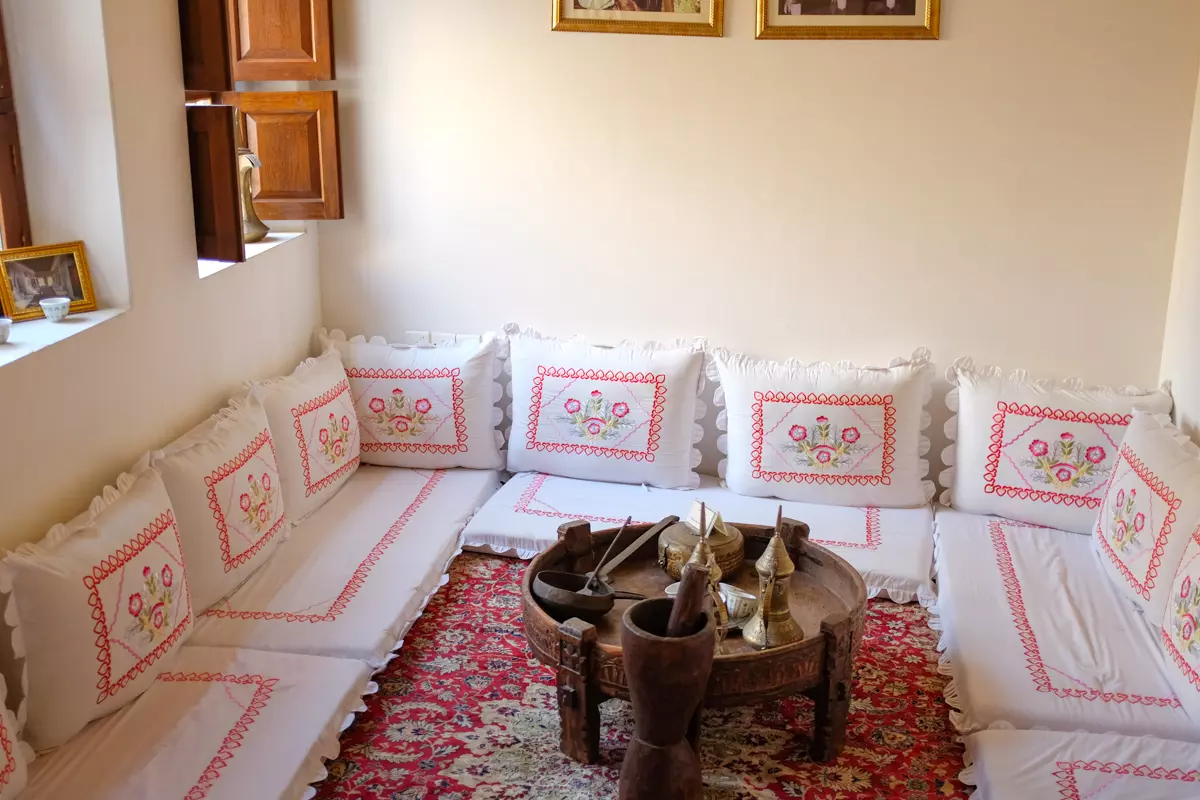
Coffee lovers, this museum absolutely deserves a spot on your list of must-visit places! However, it’s not just for coffee enthusiasts—it’s also ideal for those interested in its history or curious travelers seeking unique and fascinating destinations. The museum’s exhibits provide a glimpse into the origins of coffee, its history, and traditional preparation methods.
As soon as you step into the museum, you are welcomed by the aroma of freshly brewed coffee. The exhibits showcase the history of coffee, traditional brewing tools, and beautifully crafted antique cups that reflect its cultural heritage. One particularly fascinating highlight is the focus on coffee rituals and the diverse ceremonies associated with its consumption.
I always appreciate museum exhibits that provide a tangible connection to the past. It was especially captivating to explore the different coffee preparation methods across various cultures and learn about the unique approaches to enjoying this beloved drink. And, of course, one of the most delightful aspects of this museum is the chance to sample an array of coffees—a true treat for the senses.
Opening Hours: The museum is open to visitors from Saturday to Thursday, 9:00 a.m. to 5:00 p.m.
Accommodation: Here are all your hotel options in Dubai.
Coin Museum

Another museum in Dubai’s Al Fahidi neighbourhood, which may be lesser-known but is still worth a stop, is the Coin Museum. It’s especially interesting if you enjoy history or collecting unique things, since here you can see valuable and extremely rare coins you won’t find anywhere else.
The collection features more than 470 coins from different regions and time periods, including Turkey, the Arabian Peninsula, Egypt, Iraq, India, and Persia. A large part of the exhibition focuses on Islamic historical coins from various caliphates, which I found fascinating because they show how trade and culture were connected across the region.
I liked that the museum isn’t overwhelming—interactive displays, also available in English, make it easy to explore even if you’re not a coin expert. It’s a small but unique place that gives you a different perspective on Dubai’s history and economy.
Working Hours: The museum is open from Sunday to Thursday, 8:00 a.m. to 2:00 p.m., and is closed on Fridays and Saturdays. Good news is that admission to the museum is completely free!
Sheikh Mohammed Center for Cultural Understanding

Let’s admit it, if you’re not a Muslim, it can sometimes be challenging to fully grasp the customs and traditions of the United Arab Emirates, right? That’s precisely why the Sheikh Mohammed Center for Cultural Understanding was established in 1998. Its mission is to help visitors gain a deeper understanding of the country’s culture, customs, and traditions. In my opinion, visiting this center is truly worthwhile if you want to learn more about this region and show proper respect.
One of the most enjoyable, engaging, and delicious experiences here is participating in traditional breakfasts, lunches, or dinners. Seated around a Bedouin-style carpet, visitors can savor authentic dishes while a guide answers questions about the food and offers broader insights into the culture. The Sheikh Mohammed Center also organizes mosque visits, providing insight into the significance of prayer in this culture and offering a closer look at Islamic traditions and the daily lives of Muslims.
The center hosts numerous cultural lectures and seminars, where participants can learn about everyday life in the UAE, family values, religious practices, celebrations, and other cultural nuances. Many visitors are particularly curious about Ramadan, and the center provides ample information about this special time of year. In addition, the center offers various workshops that encourage visitors to engage with traditional craft techniques and more.
Good To Know: Traditional meals cost €30 (130 AED) and last about 1.5 hours. These meals are very popular, so I recommend booking online in advance. The Sheikh Mohammed Center is open daily from 8:00 a.m. to 4:00 p.m.
Traditional Architecture & Wind Towers
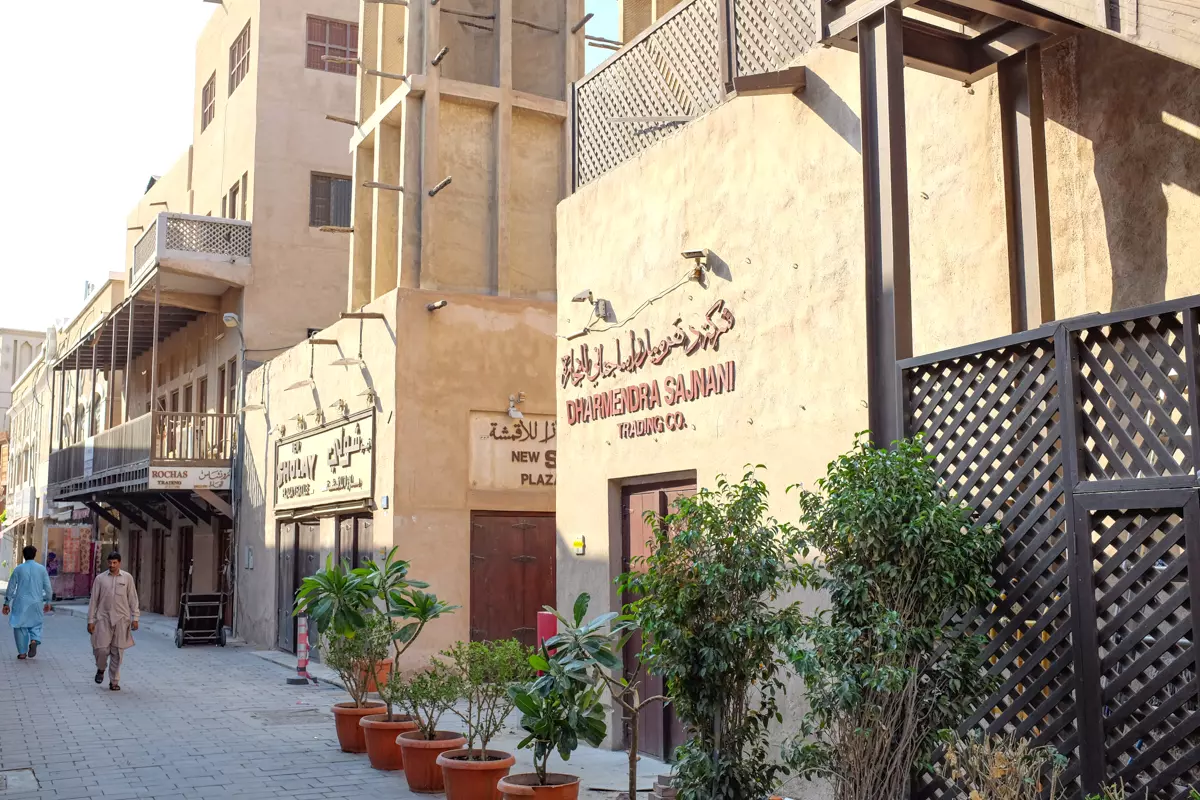
While strolling through the streets of the Al Fahidi neighbourhood, it’s impossible not to notice the traditional architecture of Arabian houses. These structures were built using natural materials such as limestone, palm wood, and other locally available resources. The style is distinguished by enclosed courtyards, intricately carved wooden elements, decorative doors and windows, and thick, massive walls.
One of the most fascinating features here are the wind towers, which played a vital role, especially in combating Dubai’s intense heat. They showcase how people in the past adapted ingeniously to the region’s climate. The principle behind their design was to channel wind into the interior spaces, creating natural ventilation and reducing indoor temperatures. Practical yet elegant, the towers stand as both a clever solution and a beautiful detail that makes Al Fahidi truly unique.
Al Fahidi Historical Creek Walkway

The Al Fahidi Historical Creek Walkway offers a unique journey through Dubai’s rich cultural heritage. Stretching along the Dubai Creek, this scenic path connects you to the heart of the city’s history, where traditional dhow boats, bustling markets, and stunning views create an unforgettable atmosphere. As you stroll through, you’ll encounter charming heritage buildings, authentic cafes, and art galleries that celebrate the area’s vibrant past. The walkway is a perfect blend of old-world charm and modern serenity, making it an ideal spot to relax and immerse yourself in the city’s timeless spirit.
Grand Souk
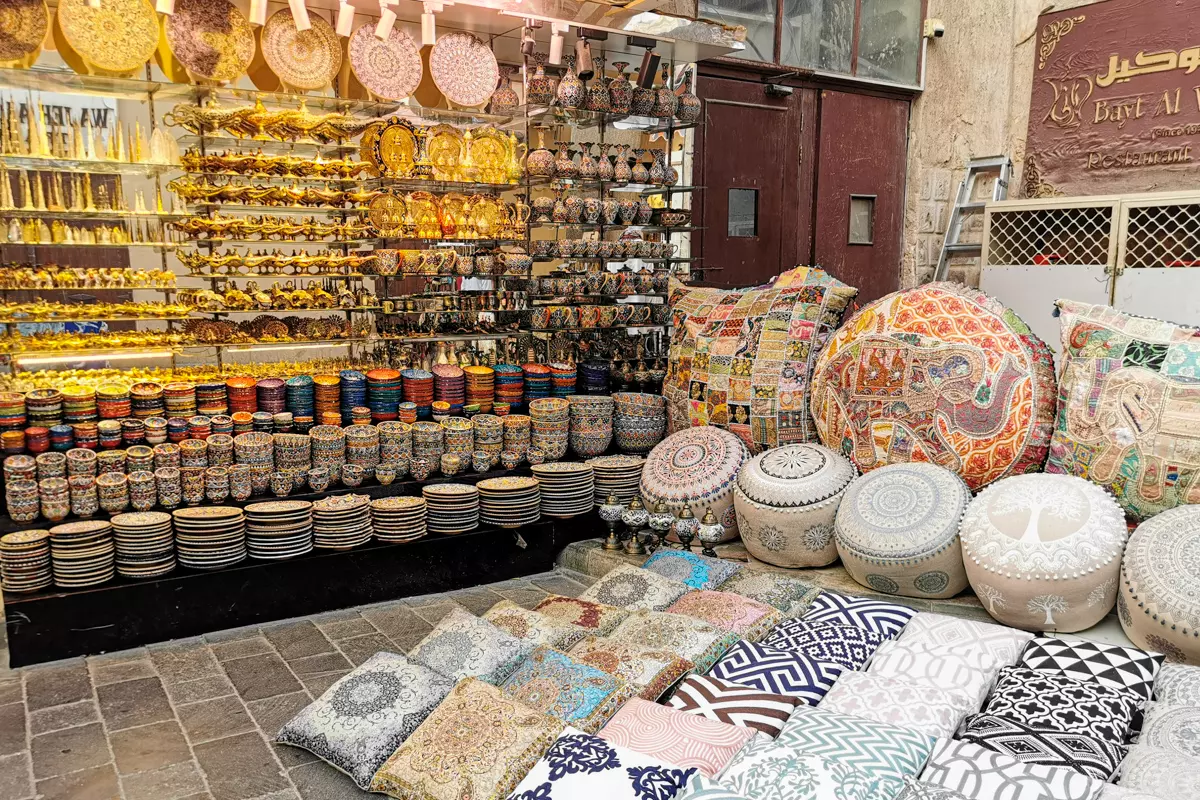
Whenever I travel, I make it a point to visit at least one traditional market. It’s a special oasis that offers a glimpse into the essence of the country, its culture, and the delightful hustle and bustle. It’s also the perfect opportunity to find something unique for yourself or as a gift. Naturally, I couldn’t miss the Grand Souk, easily accessible from the Al Fahidi Historical Neighbourhood. Many of the shops here resemble small, vibrant boutiques, adding a distinctive charm to the space.
This is an excellent destination to discover handmade crafts and artworks by local artisans. The souk offers a wide array of local clothing, antique items, perfumes, cosmetics, bags, rugs, and other textiles, as well as dishes, fragrant teas, a variety of spices, and more. Don’t forget to bargain—haggling is part of the tradition here. I found it usually leads not just to a better price, but also to a fun little chat with the shopkeepers.
Opening Hours: Grand Souk is typically open daily from 10:00 a.m. to 10:00 p.m., with a midday break from 1:00 to 4:00 p.m. On Fridays, it opens later, around 4:00 p.m., and operates until 10:00 p.m.
How To Get To Al Fahidi Historical Neighbourhood
Reaching Al Fahidi Historical Neighbourhood is convenient due to its central location in Dubai, making it easily accessible from various parts of the city. Whether you prefer public transportation, a scenic boat ride, or driving your own vehicle, there are multiple ways to reach this cultural destination. Here are the best transportation options to consider:
By Metro
Take the Dubai Metro Green Line and alight at Sharaf DG Metro Station (formerly Al Fahidi Metro Station), the closest stop. From there, it’s just a 5-minute walk to the neighbourhood.
By Bus
Several Dubai bus routes pass near Al Fahidi. Buses such as 8, 9, 15, 29, 83, and C18 stop at Al Fahidi or nearby Bur Dubai stations.
By Taxi or Rideshare
Taxis and ride-hailing services like Uber and Careem are readily available throughout Dubai. Simply enter Al Fahidi Historical Neighbourhood as your destination.
By Car
If you are driving, head toward Bur Dubai and follow signs for Al Fahidi. Parking can be found at nearby public parking lots, though availability may vary during peak hours.
By Abra (Water Taxi)
For a scenic and traditional experience, take an abra from Deira to Bur Dubai Old Souk Station. From there, Al Fahidi Historical Neighbourhood is just a short walk away.
Also read: Dubai Spice Souk in Deira Guide
FAQ About Al Fahidi Historical Neighbourhood
Al Fahidi Historical Neighbourhood, one of Dubai’s oldest areas, features traditional Emirati architecture, narrow lanes, and wind towers. It serves as a cultural hub with museums, art galleries, and heritage sites reflecting Dubai’s history before modern development.
I recommend visiting the Dubai Museum, Coffee Museum, and Sheikh Mohammed Centre for Cultural Understanding. The neighbourhood is also home to art galleries and traditional Arabian courtyards, perfect for soaking in the historical atmosphere.
Yes, you can join walking tours led by local guides to learn about the neighbourhood’s history and cultural significance. Consider attending cultural events at the Sheikh Mohammed Centre for a more immersive experience.
Absolutely! Al Fahidi is great for families looking to explore Dubai’s cultural roots. The area is pedestrian-friendly, with plenty of educational and interactive spots for kids, such as museums and workshops. It’s a relaxed environment ideal for a family outing.
I recommend visiting Al Fahidi Historical Neighbourhood between November and March, when the outdoor areas are more enjoyable. As for the time of day, mornings and late afternoons are best for exploring, with pleasant temperatures and lively streets.
Book your flight
For the best flight deals, I always rely on Skyscanner. Features like Multi-city and Explore Everywhere help me uncover incredible travel opportunities.
Rent a car
Discovercars is my top choice for comparing car rental prices for any road trip around the world. The booking experience is always smooth and easy.
Travel insurance
SafetyWing provides affordable travel medical insurance with global coverage, perfect for digital nomads and long-term travelers.
Book Tours & Attractions
Experiencing a destination to the fullest is easier with a well-planned itinerary. I use GetYourGuide for guided tours and Tiqets for quick access to museum and amusement park tickets.
Protect yourself online by VPN
No matter where I go, I always use NordVPN for secure browsing and to ensure I can access websites that might be blocked in certain countries.
Disclosure: I only suggest companies that I personally rely on. If you use the affiliate links in my posts to book services, I’ll earn a small commission, with no extra cost to you.
Have you been to Al Fahidi Historical Neighbourhood? Share your experience in the comments!
Share on

Hi, I’m Evelina, a travel enthusiast who loves nature, peace, and authentic places. I cherish the freedom to explore and learn with each adventure, whether it’s hiking trails, stunning beaches, natural parks, unique architecture, or rich cultural heritage. I hope my experiences inspire you to embark on your own journeys!
